Through the early '90s Sega was doing anything but sleeping on the job. They released Virtua Fighter, the first arcade polygon fighting game in 1993 the same year that Cyber Sled came out. It featured a diverse cast of characters and a new game mechanic that allowed players to push opponents out of the ring and disqualify them. Virtua Fighter tried to focus on more realistic combat and fighting styles than the more traditional 2D fighting games like Street Fighter and Mortal Kombat. Many arcade gamers were not initially drawn to the title because it moved much slower than traditional fighting games. Moreover the polygonal characters in Virtua Fighter were extremely blocky because of the limited computing power of early hardware. Namco would not answer the challenge to develop a 3D fighting game for a few more years. When the studio released Tekken in 1995 then arcade visitors began to take notice. Namco had only slightly bumped up the polygon count for their 3D models. What really changed the perception from gamers was the use of textures. Because the polygonal characters in Tekken had textured skin, clothes and hair and the environments did as well they appeared much more detailed than the Sega characters.
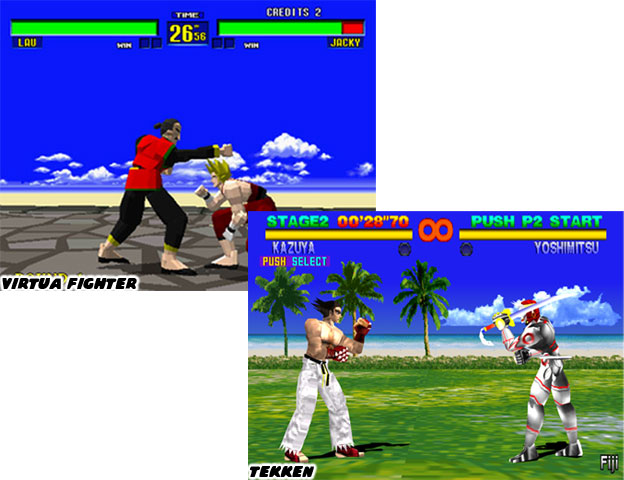
The diversity of the Tekken cast was not any different than what players had seen in other games but the moves that each character had were not necessarily grounded in reality. Tekken was one of the first 3D fighting games to employ the absurdly overpowered strikes seen in kung-fu cinema. Characters could kick each other into the sky and then punch them a few more times before they hit the ground. It was a mechanic that looked amazing in 3D. As far as design went the characters seemed to be a mix of those found in Street Fighter and Virtua Fighter. For example the main character Kazuya Mishima was Japanese and wore white, his rival was an American named Paul Phoenix that wore red. The two were similar to Ryu and Ken from Street Fighter but also Akira Yuki and Jacky Bryant respectively from Virtua Fighter. The similarities didn't end there.
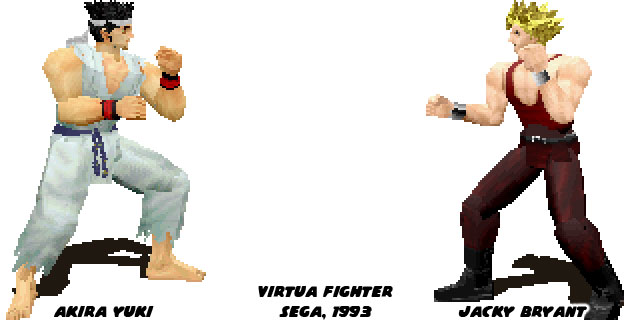
Paul Phoenix was typical of US characters in Japanese games. He was brash and flamboyant and enjoyed being the cool guy. The same thing could be said of Jacky Bryant. To many gamers Phoenix seemed to be a parody of the archetype. He was so cool that he was absurd as well. Insiders noted that he was created to take a jab at the Sega, and even Capcom designs. Jacky for example was not only an accomplished fighter but he was also a professional race car driver. It was as if he simply excelled at everything he tried out for. Sega did everything to make him appear cool in the series. The way they dressed him, the cars he drove personally and professionally. He was the ideal that gamers were supposed to look up to. It seemed to be pandering the way Bryant was juxtaposed to cars that brought back the memories of OutRun and Daytona USA, the earlier Sega racing hits. After all if the American characters were good at one form of racing then it would have to be driving a stock car in a circle.
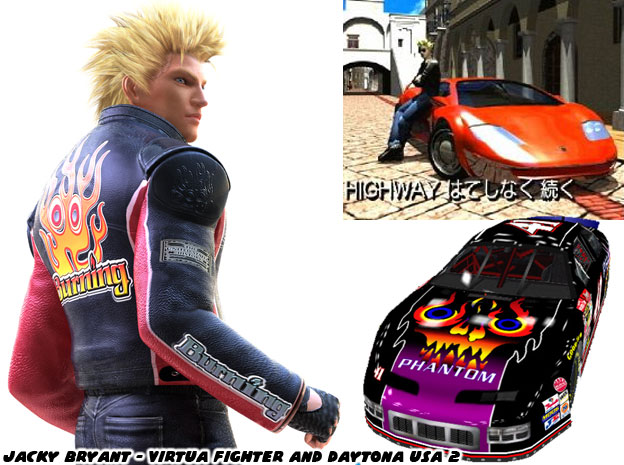
Sega seemed infatuated with the "hey look at this cool guy" school of design. It became fodder for Namco through the rest of the '90s. When they created Paul Phoenix they went out of their way to make him look even cooler, at least by Japanese aesthetics. Phoenix had actually changed greatly between Tekken 1 and 2. In the original game he wore a red gi and had a tall haircut. Long time fighting game fans noted that he looked like a mix of the US characters Ken and Guile from Street Fighter. Guile had a very tall flat top haircut and Ken wore all red. Jacky from Virtual Fighter was an American that also wore red. He had a red tank top and red pants in the first Virtua Fighter but his costumes would become more casual and race inspired. Namco began to change the look of Phoenix considerably over the next versions of the game to make sure that their fans understood how over-the-top the character was supposed to be. The studio would often portray him as a down-on-his-luck fighter while his Japanese rival rose to prominence.
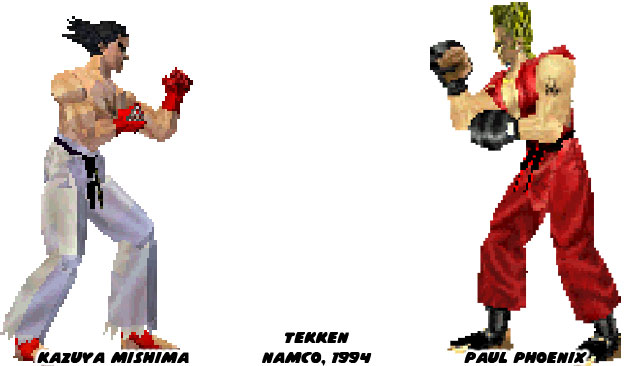
Phoenix was clearly a powerful fighter as he could hold his own against the top characters in canon as well as within the game. Yet the outlandish hair and strong attacks were not enough to get a message across to Sega. A few years later Namco introduced an obese fighter into Tekken named Bob Richards. The freestyle karate fighter had the dashing good looks of a typical American character, along with clearly died blonde hair. He even wore a red top and jeans. The only difference between he and Phoenix was about 250 lbs of fat.
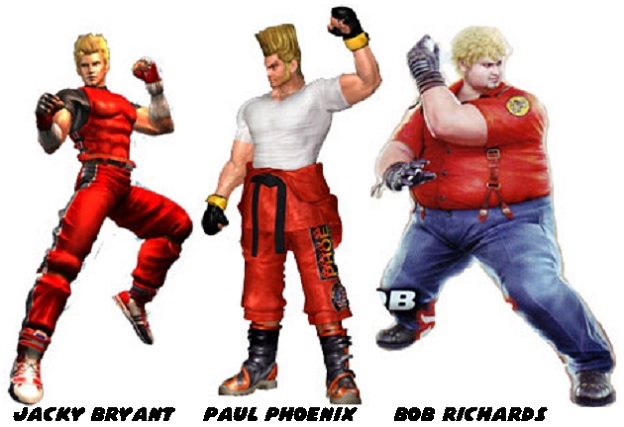
Bob had a patch on the sleeve of his shirt, a bright Hornet which would become his icon. In different costume variations the Hornet could be seen on his belt buckle as well. Those that were long time Sega fans knew that the Hornet was the signature car in Daytona USA. One of the first polygon racing hits. Bob was essentially the fat American stereotype and arcade fans either loved it or loathed it. Those that were not in the know simply saw a fat fighter that looked a little odd in the lineup. It would not be the first time that Namo had fired a shot across the bow at Sega. The beef between the studios could be traced back to their racing rivalry. The next blog will look at the period where both companies were going head to head across different racing formats.
As always if you would like to sponsor me
please visit my Patreon page and consider donating each month, even as little as $1 would help make better blogs and even podcasts!










Its so clear now!!! The Ryu / Ken take I can see in both games but I stay with Tekken long enough to see Bob Richards and the hornet patch. heh.
ReplyDelete